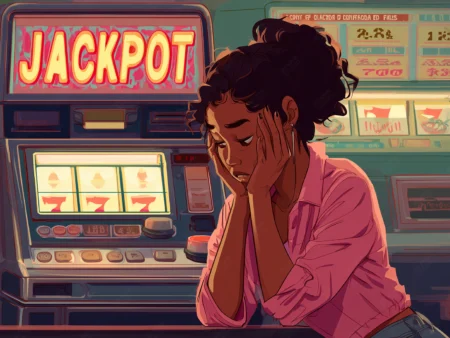Ask around a keno lounge and you’ll hear it fast: “These numbers are hot.” Players love chasing streaks, convinced some picks hit more often than others. It’s part superstition, part strategy, and a clever bit of casino psychology. But does the math actually back it up?
On the surface, keno looks simple: pick numbers, wait for the draw, and hope for matches. But behind that simplicity lies endless debate. Some players track hot numbers religiously, others stay loyal to lucky birthdays, and a few quietly accept the truth: randomness doesn’t care what you believe.
Still, it’s a question worth asking. Once you understand how the math behind keno really works, you’ll see why “best keno numbers” don’t exist, and where your edge actually comes from. Playing smarter means knowing the odds, managing your bankroll, and choosing games that give you more value for every ticket.
Table of contents
The Myth of Hot Numbers in Keno
Keno runs on a straightforward framework: 80 numbers, random draws, and pure chance. Each round, whether it’s a live machine or an RNG online, numbers are picked without any memory of what came before. On paper, that means all numbers are equal, every single draw.
So why do players chase hot and cold numbers? Because patterns feel real when you’re caught in them. If 17 pops up four times in one session, it suddenly looks like one of the best keno numbers to ride until the streak ends. On the flip side, a number that hasn’t shown in hours feels “due” for a rebound. That’s where the idea of keno hot numbers takes root.
Here’s the reality check: past draws don’t influence future ones. Just like flipping a coin ten times doesn’t change the odds on the eleventh, keno results remain independent. Casinos lean into this psychology by showing “recent draws” on the display. It doesn’t change the math, but it does fuel the chase, keeping players engaged and convinced there’s a pattern waiting to be cracked.
What the Data Actually Says
Frequency Charts and Draw History
Some casinos double down on the idea of “best keno numbers” by publishing frequency charts. You’ll see display boards or digital overlays showing which numbers have hit most often in the last few hundred rounds, sometimes dressed up with color coding or heat maps. At a glance, it looks convincing, certain numbers look “hot,” while others barely move.
Step back, though, and the story changes. Over tens of thousands of draws, those spikes flatten. Every number carries the same long-term probability of being picked. What the charts really capture is variance, the short-term streaks that make keno feel unpredictable and exciting.

Why Players Track Numbers Anyway
If the math says all numbers are equal, why do players still chase hot and cold picks? Simple: psychology. Tracking streaks creates the illusion of control in a game built entirely on chance. Picking hot numbers feels like riding momentum, while cold numbers feel like a chance to catch a rebound.
It’s the same mindset you see at slot machines when someone insists a game is “due” for a bonus. The logic doesn’t hold, but the belief keeps players invested. In keno, chasing hot or cold numbers won’t improve your odds, but it does add a personal layer of strategy that makes the game more fun for many players.
Winning Keno Strategy: What Really Matters
Choosing How Many Numbers to Play
One of the biggest decisions in keno isn’t which numbers you pick, it’s how many. The odds shift dramatically depending on your selection. Hitting 7 out of 7, for example, comes with one of the highest payouts in the game, but the probability of landing it is razor thin. On the other hand, playing fewer spots improves your chances of hitting, but the payouts shrink just as fast.
That’s why experienced players always study the pay table before committing. Knowing how many numbers to pick, and what the return looks like, is the foundation of any winning keno strategy.
Bankroll and RTP Considerations
Here’s the truth most players don’t like to hear: keno isn’t known for generous RTP. Compared to slots or blackjack, the long-term return is usually lower. That doesn’t mean the game can’t be fun, but it does mean you need to approach it with discipline.
Smart bankroll management can stretch your sessions, giving you more shots at those rare but satisfying big hits. The smartest way to play is to treat keno as entertainment first, with the jackpot potential as a bonus.
High RTP Keno Games
Not all keno games are created equal. Some variants are designed with slightly higher RTP, and those extra percentage points matter over time. Online keno often gives you better options than land-based versions, with regulated casinos offering fairer odds, transparent pay tables, and safe environments to play.
If you’re serious about getting the most from your sessions, stick with higher-RTP variants at licensed casinos. That’s where you’ll find the best balance of excitement, security, and value for money.
So, Do Certain Numbers Hit More Often?
Statistically, no, there aren’t “best keno numbers” that hit more often in the long run. Every draw is independent, and each of the 80 numbers carries the same chance of being picked. That’s how both land-based machines and online RNG-driven keno are built.
In the short term, though, streaks absolutely happen. A number can pop up several times in one session or vanish for hours. Those streaks are what keep the idea of keno hot numbers alive. They create the illusion of a hidden pattern waiting to be cracked, even though the math says otherwise.
If you want a real edge, chasing hot numbers won’t get you there. The smarter move is focusing on what you can control:
- Choosing higher-RTP keno variants
- Managing your bankroll for longer play
- Studying the pay tables before you pick your spots
That’s where a winning keno strategy actually exists, not in superstition, but in smarter game and money choices.
Final Takeaway
Chasing “lucky” numbers and hot streaks is part of keno’s charm, but the truth is simple: the best keno numbers don’t actually exist. Over time, every number carries the same odds. What really makes the difference isn’t superstition, it’s how you play. Picking the right number of spots, sticking to a bankroll plan, and choosing higher RTP variants are the only levers you truly control.
Keno is at its best when you treat it as entertainment with the upside of a big hit, not as a puzzle to solve. The thrill comes from the draw, not from cracking a pattern that isn’t there.
FAQs About Keno Numbers and Strategy
There are no universal top numbers. Any “hot list” you see comes from short-term streaks or superstition. Over time, every number has exactly the same odds of being drawn.
No strategy guarantees profit, but you can improve value by playing higher RTP keno variants, sticking to a sensible number of spots (often 4–6), and managing your bankroll with discipline.
The odds are about 1 in 40 979, which is why 7-spot wins come with some of the biggest payouts. Always check the pay table, since prizes vary by game.
Keno is primarily luck. The skill lies in how you play, choosing the right variant, understanding the pay table, and controlling your bankroll.
Yes, both online and in land-based venues. Players have hit jackpots worth hundreds of thousands, and in rare cases, progressive keno jackpots reaching seven figures.












































